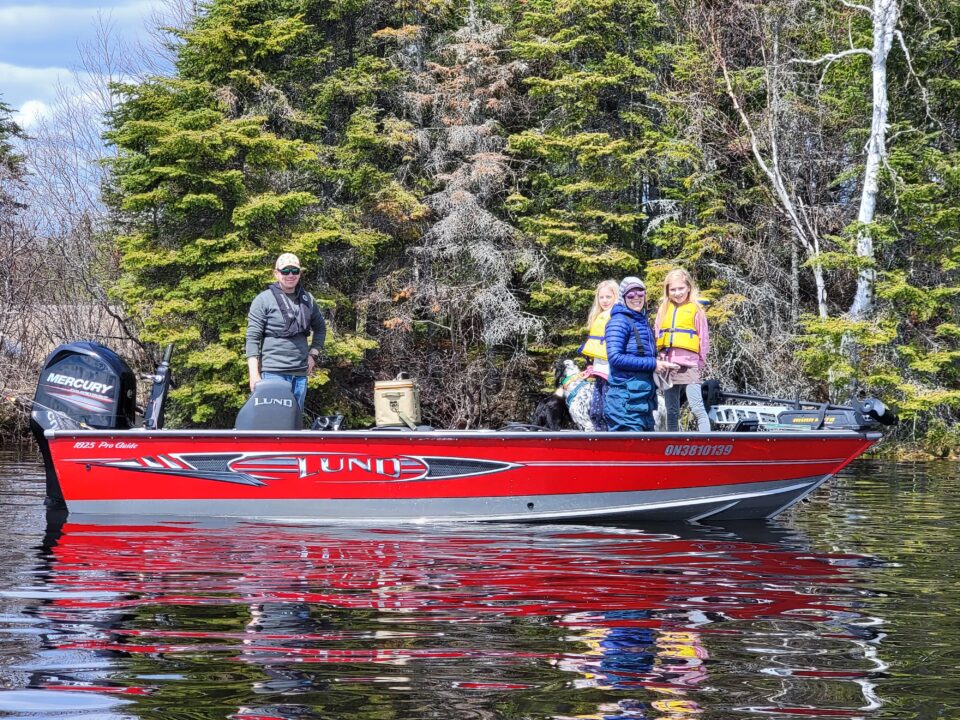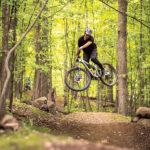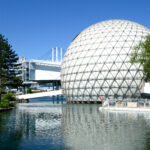It’s always a challenge to fish a new lake. There’s so much to consider and it is daunting to look out and see so much unfamiliar water. The hopes of catching a fish or two can be dashed quickly if you don’t make a few right plays and good decisions. Hopefully, this article will help you figure out how to fish a new lake this summer.
Research
One of the easiest things to do right away is a little research. Gathering intel on lakes has gotten a lot easier with the arrival of the Internet and online sources, but you can also use magazines like this one or old school maps as starting points. There are hydrographic (depth) maps available for many lakes in Canada, but there is one caveat: Some of the hydrographic maps that are floating around are based on information that used relatively crude techniques to get depths. Not all the depth maps you’ll see use the modern electronics we use today. Occasionally, you must take a depth map with a grain of salt. However, just about any information from a map is helpful, even if it’s not exactly dead on.
If you have modern electronics with mapping and GPS, you can often buy micro SD chips that will give you information on a lot of lakes (but not all). Having a depth map on your sonar unit is a big help if you’re on a new lake, and it shortens the learning curve. But let’s assume that you are going to a lake without these modern tools on hand. What do you do?
Some of the things that you can physically see in and around a lake really help in almost every fishing situation. One of the things that I always look for are main lake points, and generally these are visible as they stick out into the lake.
Points
Points are what I call a “fish collector.” Sportfish will gravitate to the end or side of a point because bait, nymphs, leeches, and other foods congregate in these areas. Just about every species of fish will use a point to ambush minnows, whether it’s lake trout, walleye, northern pike, or smallmouth bass. All fish like to hang around points at some period in the day. Sometimes the fish are a little bit deeper, or they may be right up in the shallows. Simply put, you can never go wrong trying out main lake points when you’re fishing a new lake.
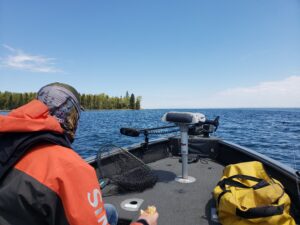
Islands
Islands are always a good bet because fish can find habitat for feeding that is still close to deep water. Generally, there are rocks and boulders associated with islands, or they may have sheer rock edges that provide shade for fish like bass and walleye. Often when you see two smaller islands close together, the saddle between the two will have weeds on it. It will also be a little bit shallower than the surrounding water. I’ll fish a saddle for any number of fish, but northern pike, smallmouth bass, and muskie love a saddle.
Bays and Reefs
Bays are an area of refuge for fish and can sometimes feel like mini lakes unto themselves. Many bays have shallow areas with deep water nearby. These drop off areas are prime spots for walleye, smallmouth bass, and pike. Sandy beaches are always worth a look, especially if there are large beds of cabbage weed in close proximity. One thing I’ll always look for in a bay is a visible reef. Sometimes the reefs will be sticking out of the water, other times they’re just below the surface. The nice thing about underwater reefs is they are often marked by a buoy. If you can see a reef that’s marked, it’s always worth trying a few casts around it. The water may only be a couple feet deep on the top of the reef, but walleye, smallmouth bass, pike, and brook trout (in trout lakes) will patrol these kinds of areas looking for minnows, perch, and other baitfish to feed on.
Flowing Water
Any form of water running in and out of a lake has the potential to draw fish. The current attracts fish during spring, summer, and into the fall, for a wide variety of reasons. Smallmouth bass and walleye in particular are attracted to current areas, but just about every species of fish will enter areas of moving water at some point. The deeper and larger the river that enters a lake, the better, but even small creeks draw fish. I’m often surprised at what a creek mouth will have hanging around it. Other current areas to look for include lake narrows. Any narrows area where the water goes through a rock cut or neck downs will hold fish. Narrows create a funnel where baitfish, insects, and anything that fish feed on gets washed through. Deep narrows are great for lake trout, as cisco and whitefish frequent these spots.
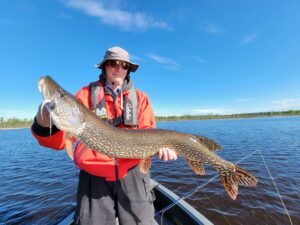
The Shoreline Game
Rocky or boulder strewn shorelines are always worth a try, especially when they are wind-blown. A shoreline does not need to be super deep to hold fish. Shorelines that drop to 10 or 15 feet can hold a lot of different fish, depending on wind and overcast conditions. If you are a bass, muskie, or brook trout angler, trees that are down in the water along a shore are worth a look as well. The bigger the tree and the more branches, the higher the odds it will hold a fish or two.
Troll a Crankbait
If you’re having trouble locating fish, I recommend trolling a crankbait like a Rapala Shad Rap or a Rapala Tail Dancer and covering some water. Trolling shorelines, off the tips of points, and across the flats in bays, can help you contact fish. You might even want to troll some open water, as a crankbait will catch many kinds of fish at different depths.
I hope these tips have helped and good luck on your new lake this summer.


